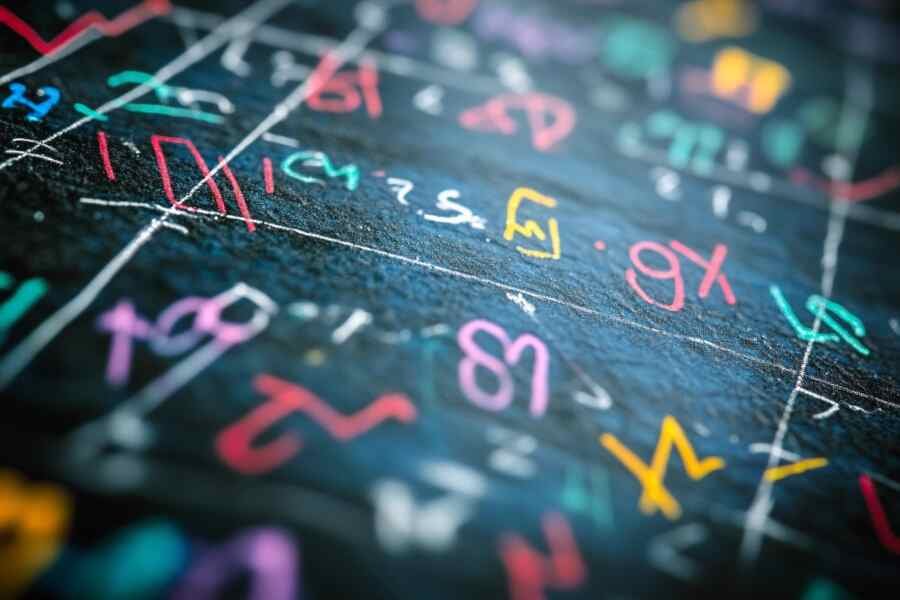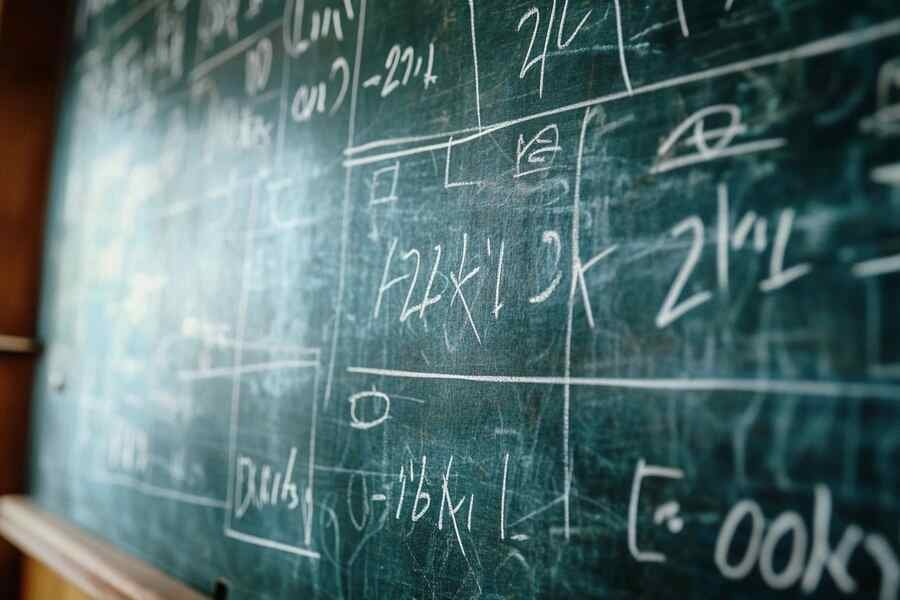Decimal Numbers
The decimal numbers are based on multiples of the number 10. This implies that the figure placed to the left of another is worth ten times more than the adjacent one to the right. The notion of the decimal number is not very relevant in terms of mathematics, because it is relative to the way of writing the numbers – here the base ten – and is not relative to the numbers themselves. Having chosen base ten is an arbitrary decision of humanity (due, surely, to the number of fingers on both hands), absent of mathematical meaning.
Converting a number written in decimal base to base N
To go from a number in decimal base to a number in base N, we can apply the following method:
Let K be the number in decimal base to be converted to base N.
- Perform the integer division of K by N. Let D be the result of this division and R the remainder
- If D >= N, start over at 1
- Otherwise, the base N notation of K is equal to the concatenation or combination of the last result and all remainders starting with the last.
Example: Conversion to hexadecimal base (base sixteen) of the number 3257 written in decimal base
- 3257 / 16 = 203,5625 that to say
- 3257 = 203 × 16 + 9
- 203 = 12 × 16 + 11
Knowing that 11 (eleven) is noted B and that 12 (twelve) is noted C, the writing of 3257 (three-thousand-two-hundred-fifty-seven) in hexadecimal base is CB9.
Converting a Number Written in Base N to Decimal Base
To go from a number in base N to a number in decimal base, we can apply the following method:
Let K be the base N number to be converted.
For any digit c of rank r in K, we calculate c × N r. The base ten representation of K is the sum of all the products.
The counting of r starts at zero from right to left.
Example
The number “10110” in base two is written in base ten:
- 1 × 24 + 0 × 23 + 1 × 22 + 1 × 21 + 0 × 20 = 22 (base dix)
Example
The number “14043” in base six is written in base ten:
- 1 × 64 + 4 × 63 + 0 × 62 + 4 × 61 + 3 × 60 = 2 187 (base dix)
Example
The number “3FA” in base sixteen is written in base ten:
- 3 × 162 + 15 × 161 + 10 × 160 = 1 018 (base dix)
Reminder: F in base sixteen is fifteen, A in base sixteen is ten.
Base -10 (negadecimal)
In the negadecimal system, that is to say with base -10.
- For example, type -1. Since it has -1 = -10 + 9 = 1(-10)+9 = (19) -10
- Example 10 = (-1)(-10) = (9-10).(-10)= 9.(-10) + (-10)² = 1.(-10)² +9.(-10)+ 0(-10) 0 = (190) -10
Decimal number system table (base 10)
Below is a table showing the decimal number system (base 10), the binary number system (base 2), the octal number/number system (base 8), and the hexadecimal number system (base 16) which are the basic knowledge for learning digital computers. Octal numbers are formed from their binary numbers by grouping every 3 bits from the right end (LSB). While hexadecimal numbers can also be formed easily from binary numbers by grouping every 4 bits from the right end.
| Desimal | Biner (8 bit) | Octal | Hexadesimal |
|---|---|---|---|
| 0 | 0000 0000 | 000 | 00 |
| 1 | 0000 0001 | 001 | 01 |
| 2 | 0000 0010 | 002 | 02 |
| 3 | 0000 0011 | 003 | 03 |
| 4 | 0000 0100 | 004 | 04 |
| 5 | 0000 0101 | 005 | 05 |
| 6 | 0000 0110 | 006 | 06 |
| 7 | 0000 0111 | 007 | 07 |
| 8 | 0000 1000 | 010 | 08 |
| 9 | 0000 1001 | 011 | 09 |
| 10 | 0000 1010 | 012 | 0A |
| 11 | 0000 1011 | 013 | 0B |
| 12 | 0000 1111 | 025 | 0C |
| 24 | 0000 1111 | 015 | 0D |
| 14 | 0000 1110 | 016 | 0E |
| 15 | 1111 2222 | 016 | 0F |
| 16 | 1112 1111 | 131 | 10 |
Types of decimal numbers
- Rational decimal numbers: If a quantity can be expressed as the fraction of two integers it is a rational number.
- Irrational decimal numbers: Irrational numbers have a decimal part that cannot be repeated periodically, and they cannot be represented by a fraction between two whole numbers.
- Exact decimal numbers: Their decimal part consists of a finite series of digits. Therefore, they can be written with all digits. To obtain the equivalent fraction, it is sufficient to indicate as numerator the rational number without a decimal separator, and as denominator the one followed by as many zeros as there are digits in the decimal part, this fraction can be simplified if possible.
- Pure periodic decimal numbers: Their decimal part consists of a single series of digits that repeat indefinitely as a complete block. That is, the same numbers are written cyclically one after the other. So you can take advantage of this feature to write only the first block of numbers that repeats and put a horizontal bar above it, which will mean that block is repeated.
- Mixed periodic decimal numbers : Their decimal part is composed of two series of digits. The first, which follows the decimal point, is made up of an arbitrary but finite series of digits. It is called the anteperiod. The second, which follows, is a series of digits that repeats itself cyclically as in the case of pure periodic decimals. This second part is called the periodic part.
- Special numbers : Their decimal part is infinite and does not have a repeated sequence. We would have as an example the number π (pi), or the solution of the square root of 2, which are numbers where it is not possible to have the exact number of its value, and we stay with the approximation that suits us best. An easily definable number like 1.123456789101112131415… would be another example of a non-rational decimal, although its digits have a set order. 0.122333444455555… would also be a sibling of the above, and all those logical series you can imagine.
Sources: PinterPandai, Math is Fun


